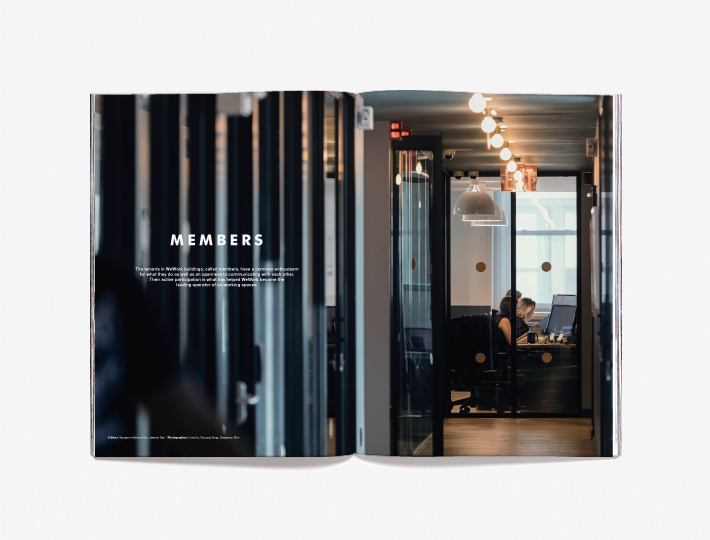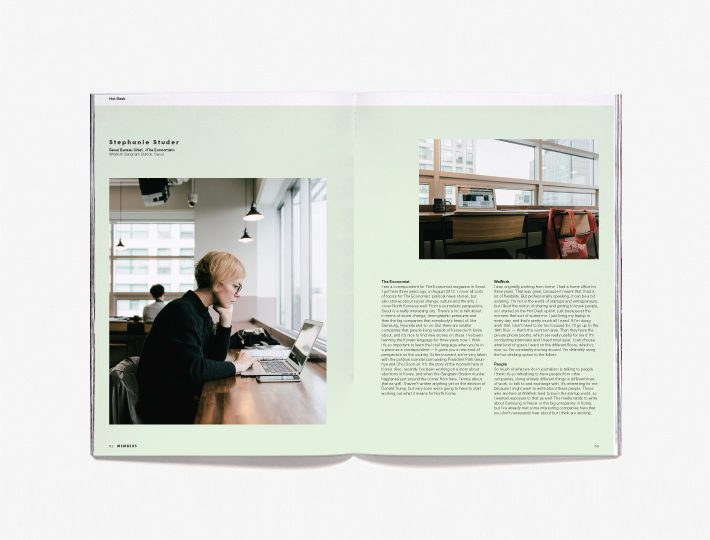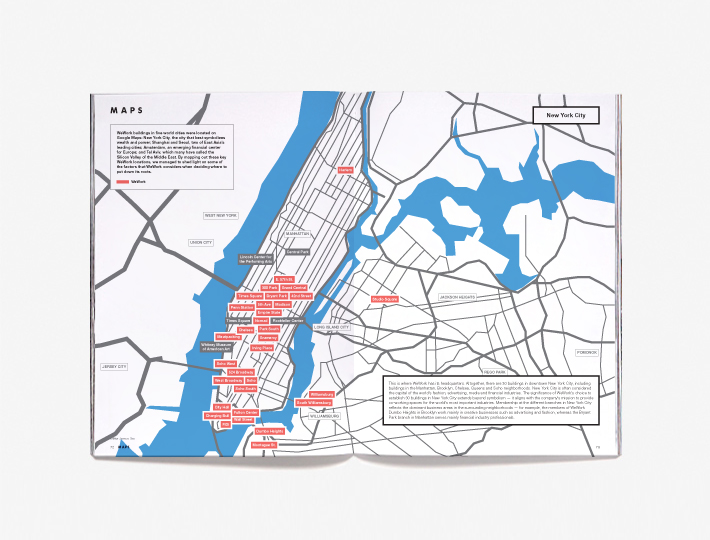■ About the Publication Magazine B is an ad-free monthly publication that dedicates each issue to one well-balanced brand unearthed from around the globe. The magazine introduces the brand’s hidden stories, as well as its sensibility and culture, and is an easy but also serious read for anyone with an interest in brands. ■ About the Publisher JOH & Company is a creative company founded in April 2011 by Suyong Joh, former Director of Creative Marketing & Design at NHN. He oversaw and directed the construction of NHN Green Factory, which is the headquarters of NHN, the company that has earned domestic and international reputation as “Google of Korea.” He also created a sensation in the publishing world when he compiled the construction process in a publication, Green Factory. Currently, he leads JOH & Company, a group of creative directors that he has brought together from various fields, and he is conducting complex projects encompassing architectural design, brand consultation, interior, food & beverage service, and product design, based on his own experience. The first fruit of such endeavor is magazine B. ■ About the Issue Welcome to the 52nd edition of Magazine B. The workspace brand WeWork was founded in 2010 by Israeli-born Adam Neumann and Oregon native Miguel McKelvey. WeWork expanded and improved on a model the duo had successfully and profitably tested with their previous startup, Green Desk, through which they leased an entire floor of a building in New York to re-lease as a co-working space to multiple tenants. And so WeWork was born, not in Silicon Valley — the West Coast home to world-famous startups — but in New York. As of the first half of 2016, the company had locations in 39 cities in 12 countries around the world, not to mention a valuation of US$17 billion. WeWork has become home to a diverse pool of tenants, officially called “members.” Freelancers and small businesses make up a large majority, but major corporations are also setting up their global distribution and marketing teams in WeWork spaces. WeWork plans come in a variety of options and prices, including private offices, dedicated desks, and the flexible, undesignated “Hot Desk” option. The spaces are also outfitted with a variety of convenient features and amenities, from a private phone booth for quiet calls to a lounge for relaxing or holding meetings, to a kitchen. Most every element one might consider necessary in the modern working space has been included. Recently, the company launched WeLive, a platform for co-living spaces, generating ample interest and close attention to this next stage in WeWork’s evolution. But as co-founder McKelvey told Magazine B, WeLive is less about WeWork venturing into accommodations and more about the company providing its members with spaces they can use for different purposes. If it’s a space that members want or need, WeWork is ready to consider it. In the same vein, WeWork’s acquisition of both CASE, an architectural agency that uses technology to conduct 3D analysis of buildings and quantify aspects of the building process, and Welkio, a company that has developed digital sign-in software for the office, demonstrates the company’s willingness to diversify the spaces it operates. Such moves are strengthening WeWork’s capacity to one day become a total solutions provider for all things related to space. WeWork likes to emphasize the “we” in its name more than “work.” The spaces are linked to an online network accessible to members worldwide to use on their computers and smartphones. Here, members can exchange information and stay up to date on news on other members. The physical WeWork spaces also continue to support networking, with members encouraged to connect with other members. Events like seminars and parties are offered and can be hosted by members. In this way, members inhabit WeWork “separately but together.” In actuality, the atmosphere is not so different from a large company, where various departments gather in one place. Separated by glass walls, the members have frequent direct and indirect interactions, and they influence one another. Co- founder McKelvey alluded to this dynamic in his interview, recalling how difficult it was when Green Desk was sold to let go of the relationships that had been built with the members: “People whose aspiration is to build a business and sell it (don’t) know what it feels like.” It’s common these days to see people studying and working in cafes rather than libraries. Libraries are quiet but they can also feel isolating; cafes might be somewhat noisier, and busier, but one does get the sense of being connected to other people, of influencing and being influenced in whatever small way. At a time when heightened attention is being paid to how work-life balance can be achieved, thinking deeply about the spaces in which we work may be part and parcel of thinking deeply about our lives. In any case, WeWork’s value proposition speaks directly to this need. Taehyuk Choi, Editor-in-Chief ■ Table of contents 02 Intro 08 Editor’s Letter 18 Opinion Devin Vermeulen, Creative Director 22 Physical Product WeWork’s well-designed co-working space 44 Digital Product WeWork’s online member network 50 Members A look at the diverse members who call WeWork home 66 Anywhere A look at WeWork locations around the world through Instagram 68 Opinion David Fano, Chief Product Officer Dolores O’Connor, VP, Real Estate Strategy & Operations 72 Maps WeWork’s criteria for choosing locations, as witnessed in five major cities 78 We Live WeWork’s new model for living 86 Opinion Rebecca Paltrow Neumann, Chief Brand Officer 90 Co- Co-working and co-living options in major global cities 94 Home Office 102 Brand Story The birth and growth of WeWork 112 Benefits Special offers for WeWork members 114 Mission Possible Giving back to the community by supporting mission-driven companies 116 Interview Co-Founder & CCO 120 Figures WeWork and the co-working movement in numbers 122 Outro |
 |
 |
 |